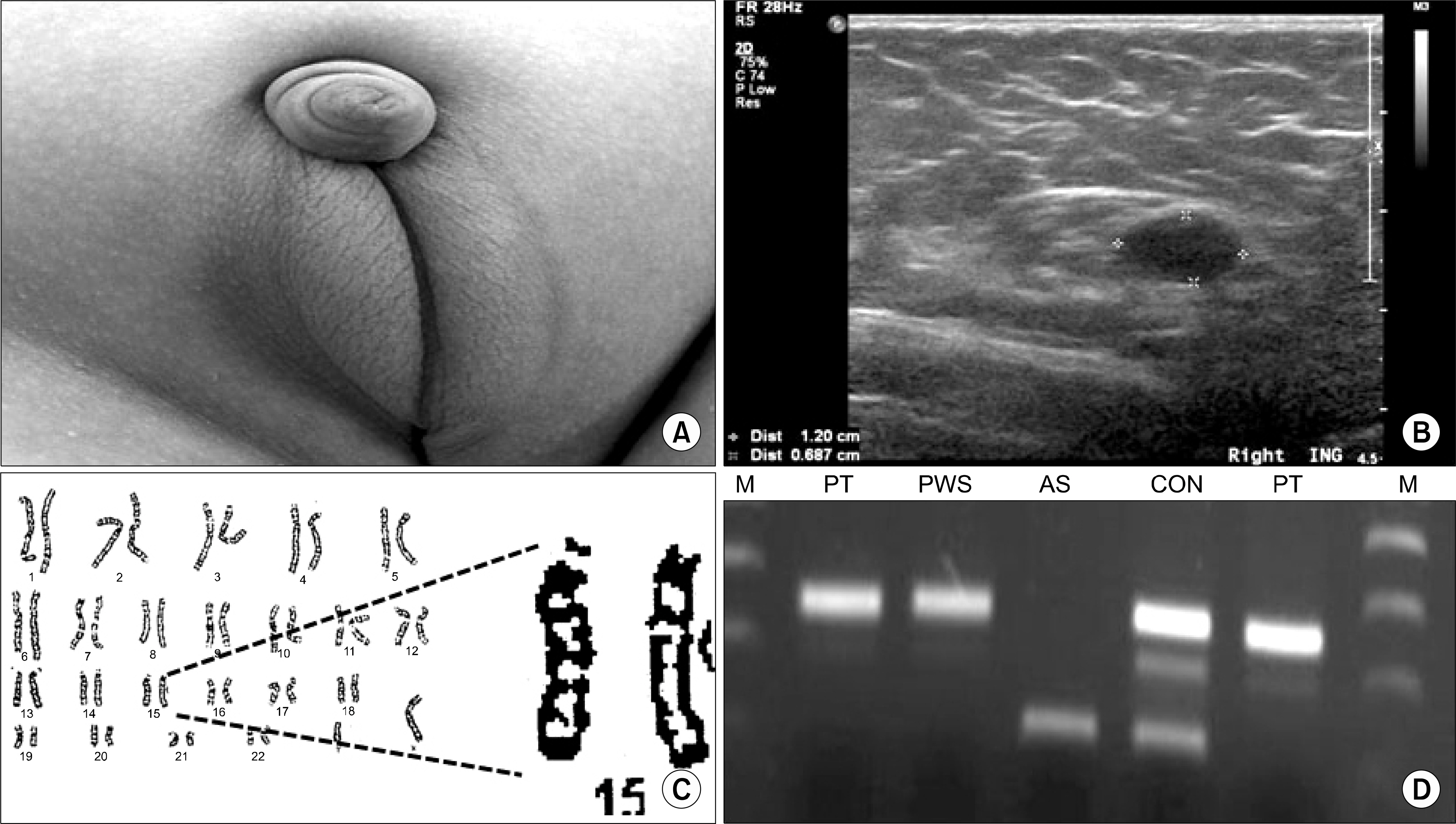Korean J Androl.
2011 Apr;29(1):85-87. 10.5534/kja.2011.29.1.85.
Prader-Willi Syndrome with Hypogonadism
- Affiliations
-
- 1Department of Urology, Dankook University College of Medicine, Cheonan, Korea. multiorigins@yahoo.com
- KMID: 2298630
- DOI: http://doi.org/10.5534/kja.2011.29.1.85
Abstract
- Prader-Willi syndrome (PWS) is a rare genetic disease caused by a deletion or disruption of genes in chromosome 15. Commonly associated characteristics of this disorder include obesity, mental retardation, short stature, and hypogonadotropic hypogonadism. A 3-year-old-boy who initially presented hypoplastic scotum, small penis and bilateral cryptorchism was confirmed the diagnosis of PWS using of with genetic tests. Finally, he was taken bilateral orchiopexy.
Keyword
MeSH Terms
Figure
Reference
-
1). Lee JE, Moon KB, Hwang JH, Kwon EK, Kim SH, Kim JW, et al. Clinical characteristics and genetic analysis of Prader-Willi syndrome. Korean J Ped. 2002; 45:1126–33.2). Yang YH, Sohn YS, Kim MS, Kim DH, Chung SC. The usefulness of fluorescence in situ hybridization (FISH) in the diagnosis of Prader-Willi syndrome. Korean J Ped. 2000; 43:360–4.3). Ramsden SC, Clayton-Smith J, Birch R, Buiting K. Practice guidelines for the molecular analysis of Prader-Willi and Angelman syndromes. BMC Med Genet. 2010; 11:70.
Article4). Nagai T, Mori M. Prader-Willi syndrome, diabetes mellitus and hypogonadism. Biomed Pharmacother. 1999; 53:452–4.
Article5). Uehling D. Cryptorchidism in the Prader-Willi syndrome. J Urol. 1980; 124:103–4.
Article6). Crinò A, Schiaffini R, Ciampalini P, Spera S, Beccaria L, Benzi F, et al. Hypogonadism and pubertal development in Prader-Willi syndrome. Eur J Pediatr. 2003; 162:327–33.
Article7). Kim HH, Chung KH, Choi H. Micropenis in children: clinical observations and managements. Korean J Urol. 1987; 28:821–6.8). Kim CS, Kim SW, Choi H. Intersex. Korean J Urol. 1986; 27:152–8.9). Choi WS, Kim KB, Ryoo HS, Kim KS. One case of the Prase-Willi syndrome. Korean J Urol. 1981; 22:630–2.10). Chen C, Visootsak J, Dills S, Graham JM Jr. Prader-Willi syndrome: an update and review for the primary pediatrician. Clin Pediatr (Phila). 2007; 46:580–91.
Article


